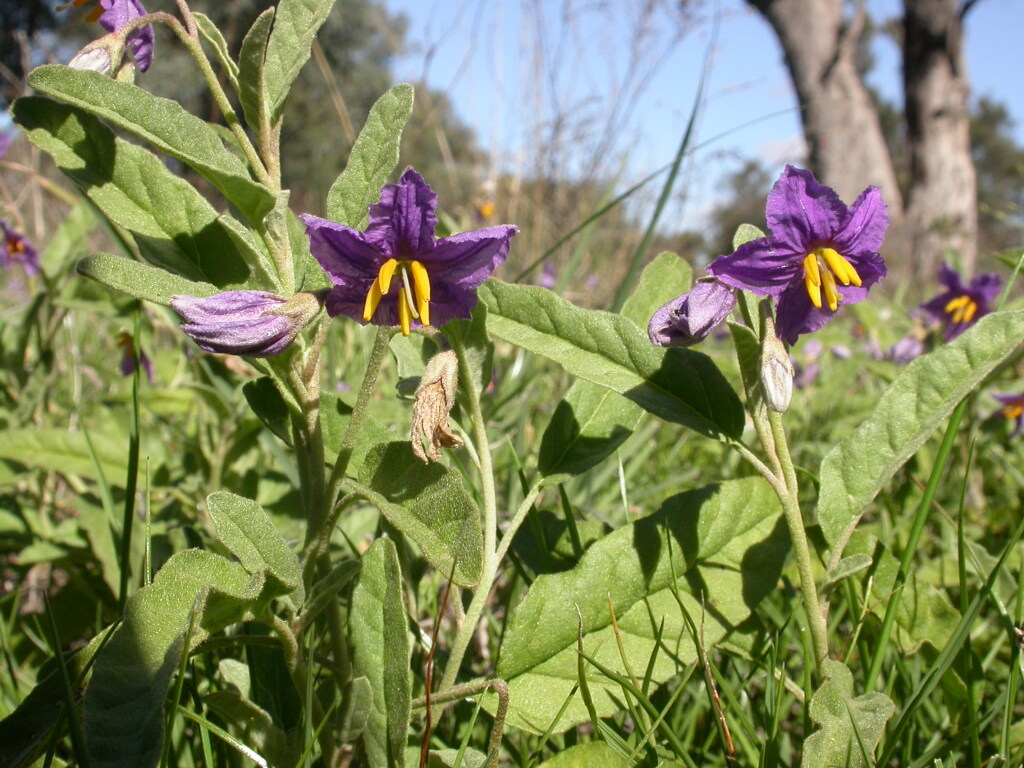Solanum esuriale
Lindl. QuenaPerennial clonal herb to 15–40 cm high, grey-green, rarely pale green, densely pubescent with stellate hairs; prickles usually absent, sometimes a few near base of plant to c. 3 mm long. Leaves oblong to oblong-lanceolate, mostly 2–8 cm long, 0.5–1.5 cm wide, apex acute or obtuse, base cuneate, margins entire or slightly undulate, concolorous, both surfaces densely pubescent; upper leaf surface stellate hairs with 6–12 lateral rays; petiole 0.5–1 cm long; lower leaves often larger, entire to shallowly lobed. Inflorescences simple, 2–6-flowered; peduncle 1–4 cm long. Flowers 5-merous, bisexual, on pedicels 10–15 mm long; calyx 4–6 mm long, accrescent in fruit, lobes linear to narrow-triangular, 2–3 mm long; corolla rotate-stellate, 15–25 mm diam., purple, lobes acute; anthers 4–5 mm long. Berry globose, ovoid or obovoid, 10–15 mm diam., acute, pale yellow to light yellowish-brown; seeds 2–3 mm long, pale yellowish-brown. Flowers mostly spring–autumn.
LoM, MuM, Wim, VRiv, MSB, RobP, MuF, Gold, CVU. Also WA, NT, SA, Qld, NSW. Scattered across north and north-western Victoria, often in seasonally inundated clay or loam soils.
Jeanes, J.A. (1999). Solanaceae. In: Walsh, N.G.; Entwisle, T.J., Flora of Victoria Vol. 4, Cornaceae to Asteraceae, pp. 332–365. Inkata Press, Melbourne.
 Spinning
Spinning



